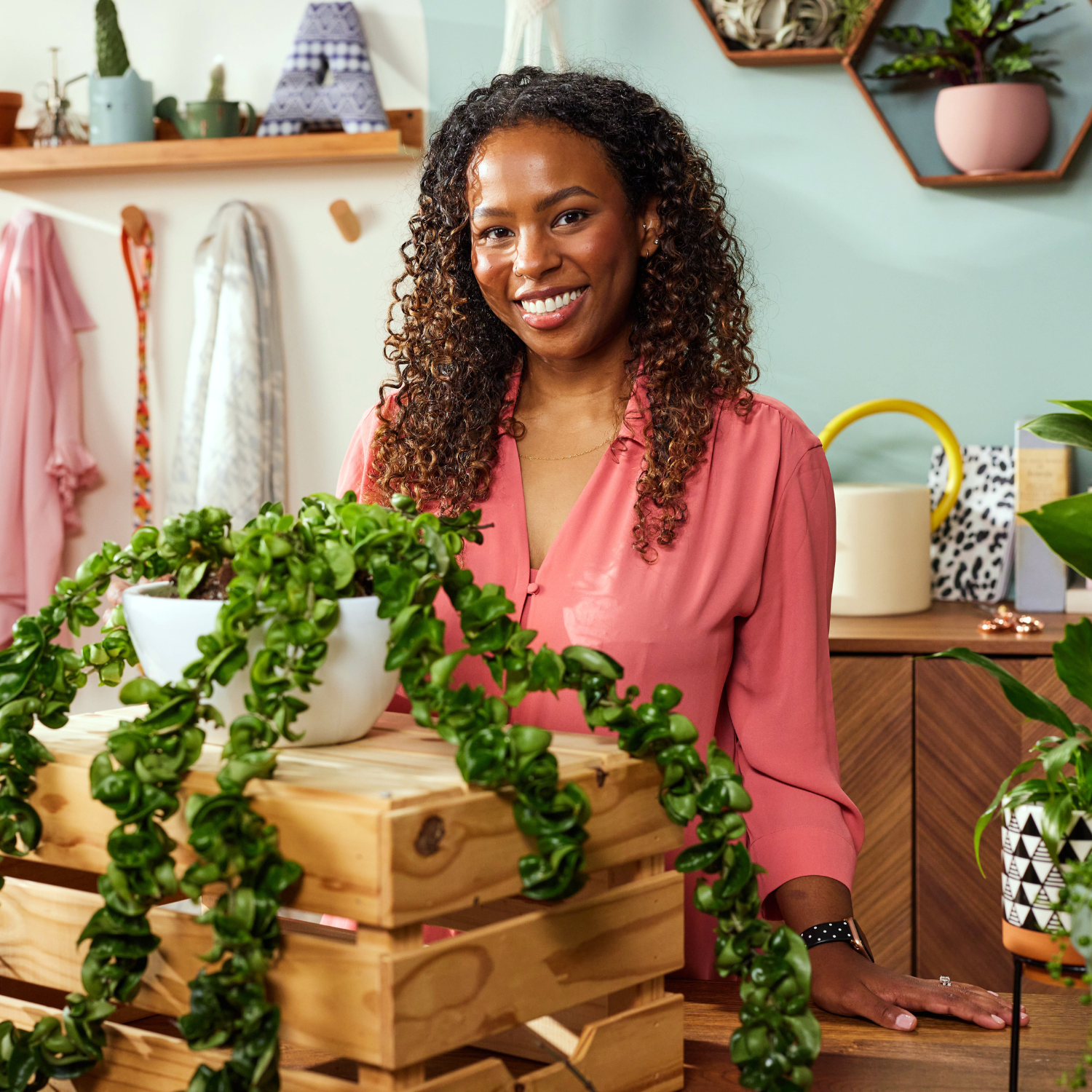
Have you ever bought a bunch of herbs at the grocery store for a recipe, only to have it wilt on you before you get around to using it? Dear readers, this perennial problem can be a thing of the past (during the summer, at least!) if you start your own herb garden. This may sound like a pricey project; but if you know where to spend and where to save, you can start one for $60 or less!

Save on a Planter
Your first consideration when starting any garden is how much space you have to work with and where you want to plant it. I love planting herb gardens in some sort of planter – many common herbs grow well in snug spaces.
My herb garden lives in a $20 railing planter just outside my kitchen door for easy access. Another option for easy access while cooking is to place herbs in pots in your kitchen windowsill. Look for small pots, bowls or teacups at your local thrift store to save on containers.
Related: Everything You Need to Know About Chaos Gardening
Prioritize a Quality Soil
It is worth allocating a good chunk of your herb garden budget to soil. Soil is what delivers nutrients to your plants, which in turn translates to bigger and better herb harvests for all your favourite herbaceous dishes. A high-quality soil specifically designed for herb and vegetable gardens is an investment from which you will quite literally reap the rewards!
If you are planning to use last year’s soil or are planting your herbs in a garden bed, compost is your best friend. Mix a high-quality compost into your soil to give your plants a boost and set them up for success.

Spend on Seeds
When it comes to garden planning, there is an age-old question: do I start from seeds, or purchase plants from a nursery?
As in many things, the answer is… it depends. Generally speaking, growing from seed is cheaper but takes longer and therefore requires planning ahead. Purchasing plants is much quicker, but more expensive. Assuming that it is early enough in the season (March to April), my recommendation for those on a budget is to start from seeds.
Most seeds from reputable companies retail for $2-5 per packet. However, to cut down on costs, there are a few ways that you can get seeds for free. The first is to look for seed libraries in your area. A seed library works like a book library does, albeit with a longer turnaround. You take seeds from the library and plant them in the spring; come fall, when they go to seed, gather some of the seeds and “return” some to the seed library. (With herbs, note that this would require actually letting one of your herbs flower and go to seed.)
Another option to get free seeds is to host a seed swap. Invite your friends over, ask them to bring some seeds to swap and make a night of it! If it’s time to start seeds indoors, you could even put out the supplies for you all to start your seeds together.

Upcycle and Save on Starter Pots
No need to buy brand new plastic pots to start your seeds in. Instead, start saving your empty egg cartons, because they make a perfect seed-starting container. The cardboard provides seeds with good drainage, but also absorbs water to keep the soil nice and evenly moist. Other possible containers to put your seedlings in are empty yogurt containers or cans with holes poked in the bottom for drainage
Another option is to head to your local dollar store – during the spring, the shelves tend to be well-stocked with biodegradable pots specifically designed for seed starting.
Related: This Vertical Garden DIY Will Transform Your Outdoor Space
Home Network your inbox.
By clicking "SIGN UP” you agree to receive emails from Home Network and accept Corus' Terms of Use and Corus' Privacy Policy.



